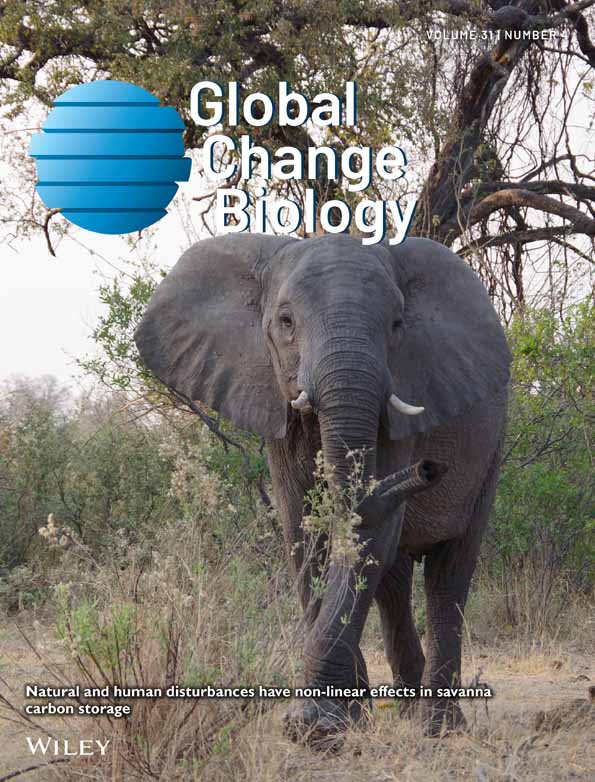Allochthonous Organic Carbon Stored in Blue Carbon Ecosystems Can Be Additional and Provide Genuine Climate Mitigation
Funding: This work was supported by the Natural Environment Research Council, NE/R010846/1, NE/S007342/1; HORIZON EUROPE European Innovation Council, HORIZON-CL5-2023-D1-02.
Abstract
Blue carbon ecosystem restoration (and avoided conversion) are important natural climate solutions. Blue carbon ecosystems accumulate carbon through in situ photosynthesising vegetation (autochthonous) and deposition of sediments during tidal inundation (allochthonous). We debate the treatment of allochthonous carbon (which was not taken out of the atmosphere by the blue carbon ecosystem) in blue carbon projects.
We acknowledge the letter to the editor by Williamson et al. (2025) commenting on our article and note that there is a similarity in the published exchange regarding the Australian blue carbon (BC) method (Lovelock et al. 2023).
1 Climate Mitigation in Blue Carbon Ecosystems
Williamson et al. (2025) incorrectly state that targeted management interventions to protect vulnerable stores of carbon in blue carbon ecosystems (BCEs) are not a valid and permissible climate mitigation strategy. Wetland/coastal restoration (and avoided conversion) are important “natural climate solutions” (Griscom et al. 2017), and reduced emissions are stated as such in the IPCC AR6 Summary for Policy Makers (IPCC 2022): “In many countries, policies have enhanced energy efficiency, reduced rates of deforestation and accelerated technology deployment, leading to avoided and in some cases reduced or removed emissions (high confidence)”.
Furthermore, there are existing carbon crediting methodologies which allow for accounting of emission reductions associated with the conservation of BCEs threatened by anthropogenic pressures (VERRA 2024). A recent analysis found that 43% of mangrove forests in Southeast Asia meet additionality requirements for reduced emissions and could be eligible for the sale of carbon credits through avoided deforestation (Kwan et al. 2025).
2 Inclusion of Allochthonous OC in Blue Carbon Projects
Williamson et al. (2025) estimate % allochthonous organic carbon (OC) contributions to BCEs using stable isotopes. In our paper, we highlighted that it is widely accepted that this is not a sufficiently precise method to accurately calculate contributions from autochthonous and allochthonous OC sources (e.g., Geraldi et al. 2019). Again, as stated in our paper, allochthonous OC contributions to BCEs vary across a range of spatial and temporal scales, limiting the suitability of such a generalized approach.
The contribution of recalcitrant allochthonous OC to BCEs is currently poorly constrained (Li et al. 2025). Moreover, the stability of all soil OC depends on environmental conditions as well as its molecular properties (Schmidt et al. 2011), and therefore the recalcitrance of OC is not necessarily related to biological turnover time. Furthermore, mechanisms which have been purported to prolong the residence time of allochthonous OC in BCE soils, such as mineral-associations (Li et al. 2025), may be destabilized by human activities (e.g., drainage for land conversion), increasing emissions to the atmosphere.
In the absence of a reliable observational and experimental approach which supports the calculation of the proportion of recalcitrant allochthonous OC, we suggest that BC projects should not attempt to discount allochthonous OC. The Australian and French BC methods employ conservative values for OC gains and losses in both the baseline and project scenarios (Comte et al. 2024; Lovelock et al. 2022) to reduce the risk from overstating the climate mitigation achieved by including all OC in a project. We recommend that this approach be employed for BC projects which do not deduct allochthonous OC from their estimates of additionality.
Author Contributions
Alex Houston: conceptualization, investigation, writing – original draft, writing – review and editing. Hilary Kennedy: conceptualization, writing – review and editing. William E. N. Austin: conceptualization, supervision, writing – review and editing.
Acknowledgments
We thank Sigit Sasmito (James Cook University, Australia) and Pete Smith (University of Aberdeen, United Kingdom) for their additional advice. A.H., H.K., and W.E.N.A. acknowledge support provided by the HORIZON-CL5-2023-D1-02-02 grant C-BLUES.
Conflicts of Interest
The authors declare no conflicts of interest.
Linked Articles
This article is a Response to a Letter to the Editor by Williamson et al., https://doi.org/10.1111/gcb.70181; regarding Houston et al., https://doi.org/10.1111/gcb.17559.
Open Research
Data Availability Statement
The authors have nothing to report.




